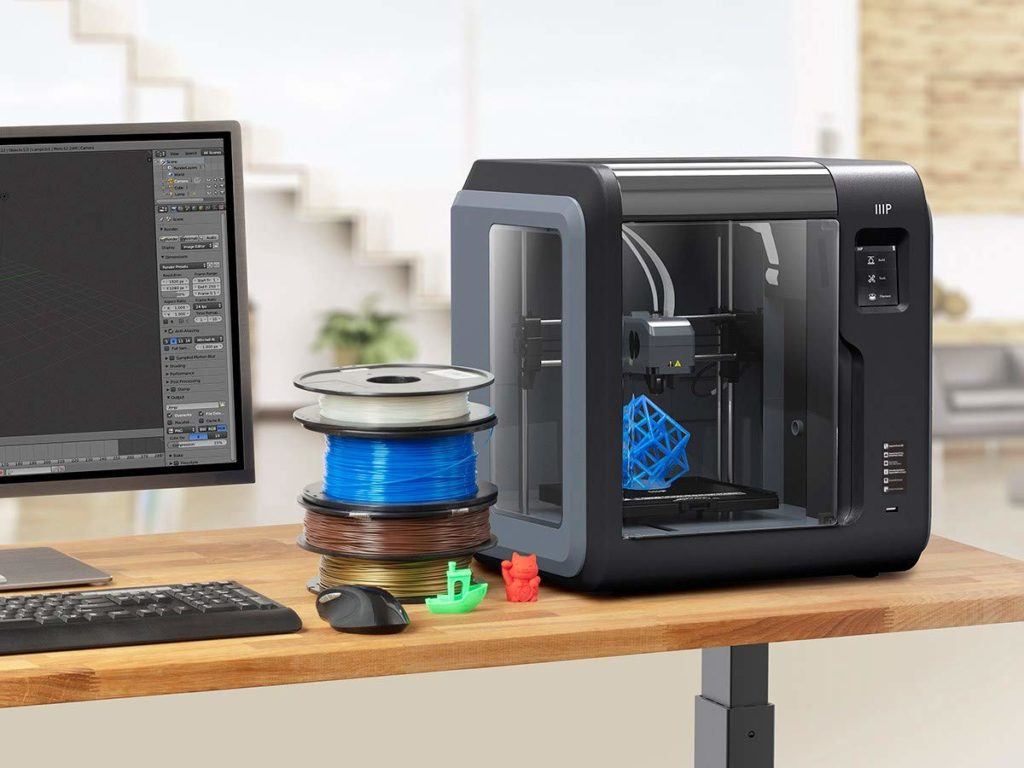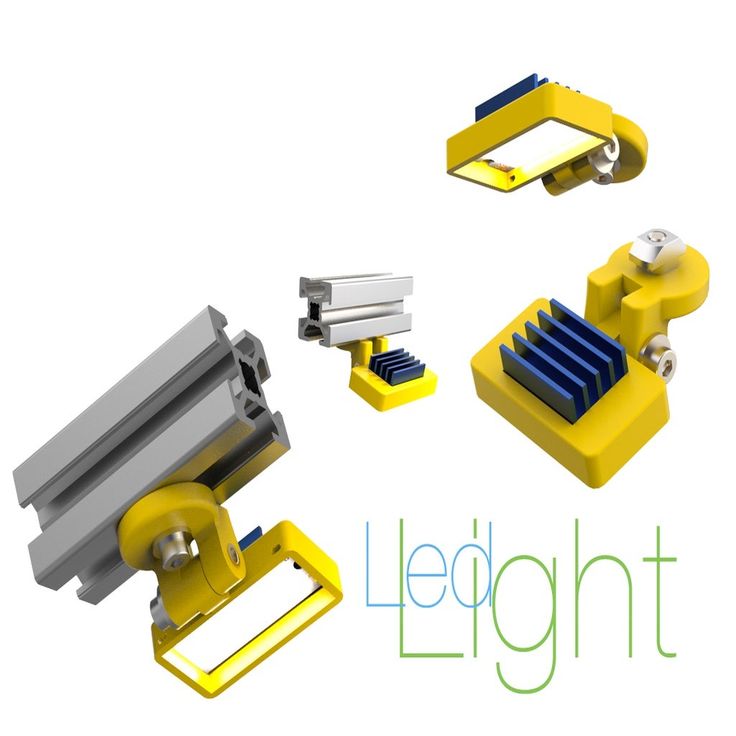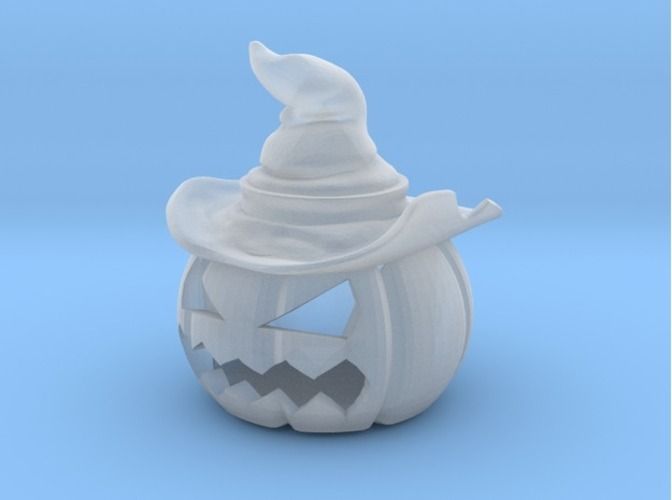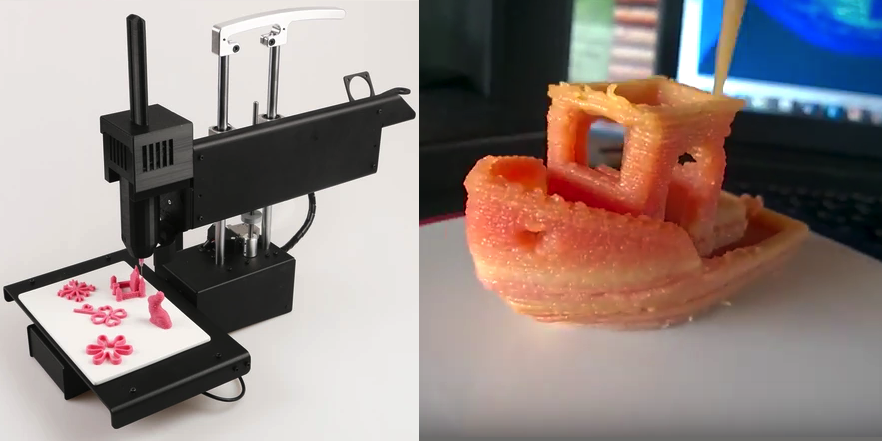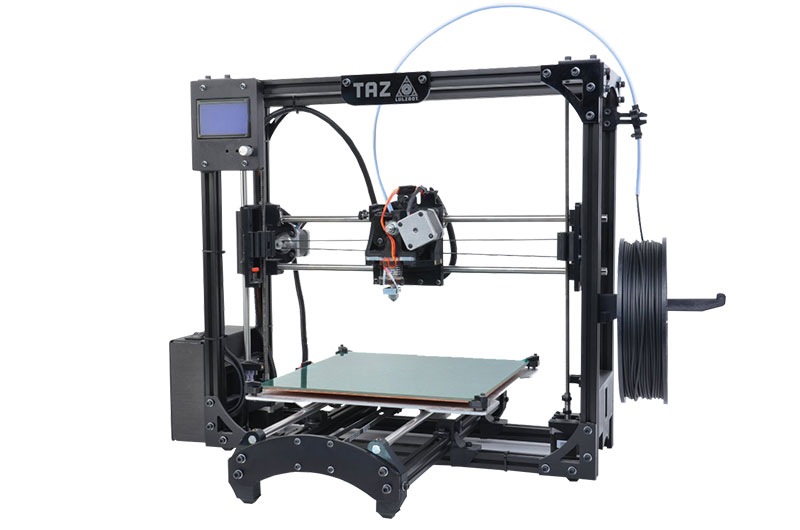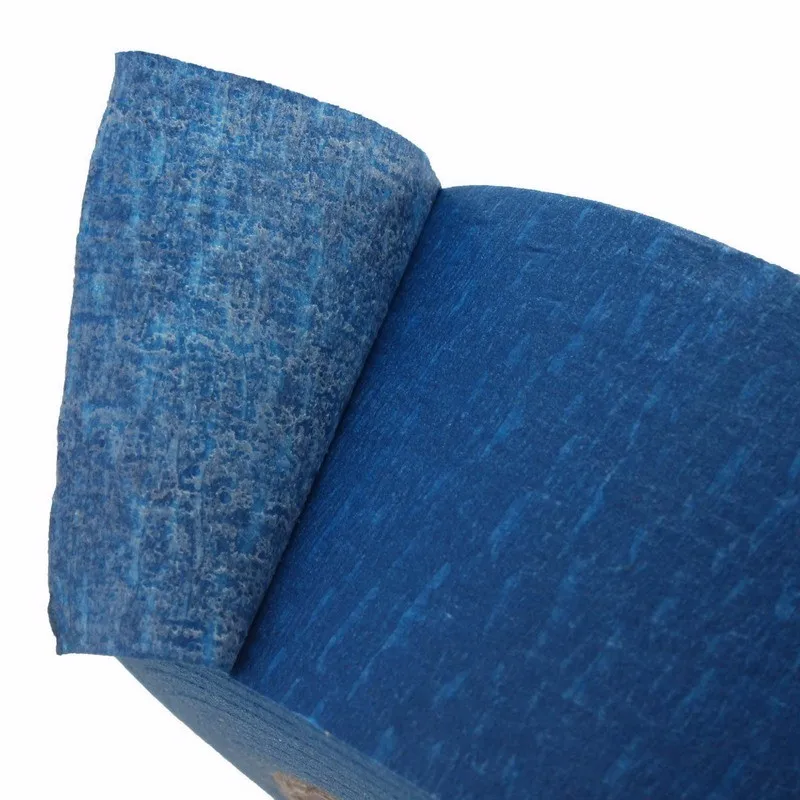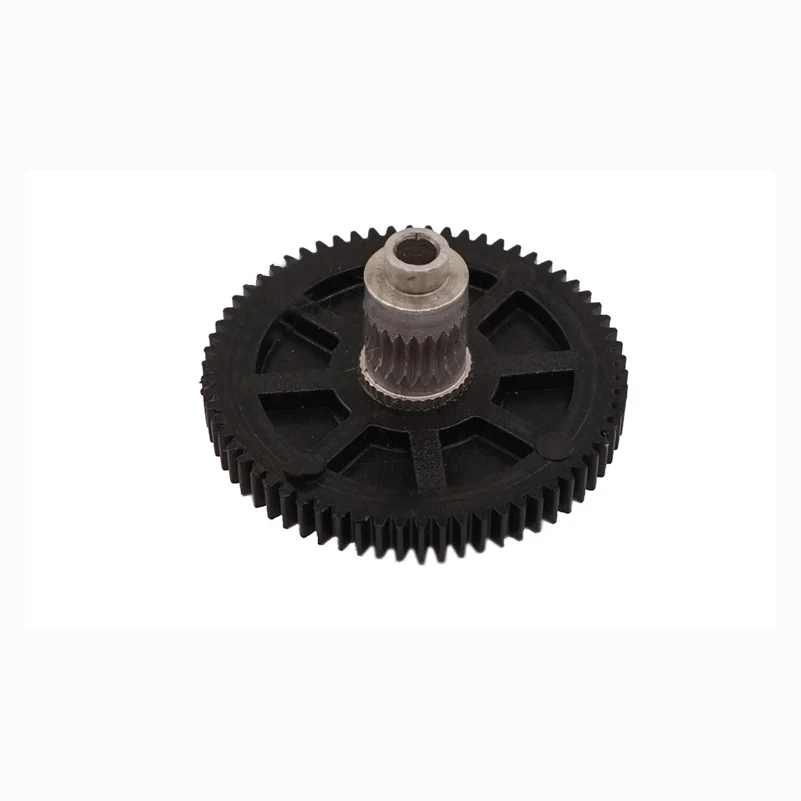Best commercial 3d printers
10 Best Commercial & Professional 3D Printers In 2022
- Last Updated: December 8, 2022
- Pat Nathaniel
Are you dreaming of making industrial-quality parts at your SME? Well, stop dreaming and start printing!
Commercial 3D printers let even a tiny garage operation make parts NASA would send to space. A professional 3D printer is a business partner you can’t afford to not have.
But we also know that with an SME budget, you can’t afford to pick the wrong 3D printer, either. You have to choose the right machine for the right application to avoid wasting its potential. But how do you do that?
Read on and meet the best commercial 3D printers in 2022.
Formlabs Form 3+
Build volume: 145 x 145 x 170 mm
Check Latest Price
Raise3D Pro2 Plus
Build volume: 305 × 305 × 605 mm
Check Latest Price
Fusion3 EDGE
Build volume: 355 × 355 × 368 mm
Check Latest Price
Table of Contents
- Best Commercial 3D Printers At A Glance
- 1.
Formlabs Form 3+ (Best Value)
- 2. Raise3D Pro2 Plus (Best Choice)
- 3. Fusion3 EDGE (Premium Choice)
- 4. Ultimaker S5 (Easy to Use)
- 5. Prusa i3 MK3S+ (Best for High-Quality Prints)
- 6. Dremel DigiLab 3D45-EDU (Best for School Use)
- 7. Zortrax M300 Dual (Best for Detailed Prints)
- 8. BCN3D Epsilon W50 (Best for Beginners)
- 9. MakerBot Method X (Best for Easy to Print)
- 10. Delta WASP 2040 Industrial X (Best for Fast Print)
- 1.
- Industrial Quality at Small Business Budgets
- What Is a Commercial 3D Printer?
- What to Look for in a Commercial 3D Printer
- Uses of Commercial 3D Printers
- Conclusion
Best Commercial 3D Printers At A Glance
1. Formlabs Form 3+ (Best Value)
2. Raise3D Pro2 Plus (Best Choice)
3. Fusion3 EDGE (Premium Choice)
4. Ultimaker S5 (Best for Beginners)
5. Prusa i3 MK3S+ (Best for High-Quality Prints)
6. Dremel DigiLab 3D45-EDU (Best for School Use)
Dremel DigiLab 3D45-EDU (Best for School Use)
7. Zortrax M300 Dual (Best for Detailed Prints)
8. BCN3D Epsilon W50 (Best for Beginners)
9. MakerBot Method X (Best for Easy to Print)
10. Delta WASP 2040 Industrial X (Best for Fast Print)
3D Printer Type: LFS | Materials: Resins | Build Volume: 145 x 145 x 170 mm
Ask any commercial SLA 3D printer user, and they’ll tell you Formlabs Form 3+ is the industry workhorse. That reputation is well deserved.
Form 3+ offers excellent print quality at a fantastic value.
With a layer resolution of only 25 microns, Form 3+ can accurately reproduce even the tiniest details. The advanced monitoring sensors ensure steady part quality.
On top of that, Formlabs has designed the printer to be highly automated. Just set it and forget it — your parts will come out great.
You can also print pretty much whatever you want. Form 3+ supports Formlabs’ extensive material range. It can produce anything from mechanical parts to accurate dental appliances and castable wax models for jewelry.
The printer doesn’t support third-party resins, though, so you’re locked to Formlab’s pricey options. The print chamber is also quite small and the speed (although better than its previous iterations) isn’t the fastest.
But at a price below $4,000, we’ll forgive all that. Formlabs Form 3+ simply provides great versatility and value.
- Affordable
- Excellent part quality
- Wide material range
- No third-party material support
- Small print volume
- Slow-ish
Check Latest Price
2. Raise3D Pro2 Plus (Best Choice)
Raise3D Pro2 Plus (Best Choice) 3D Printer Type: FDM | Materials: PLA, ABS, HIPS, PC (Polycarbonate), TPU, Nylon, TPE, PETG, Metal Infused PLA, Woodfilled PLA & Carbon Fiber Reinforced Materials | Build Volume: 305 × 305 × 605 mm
Freddy Mercury probably would’ve liked Raise3D Pro2 Plus. If you want it all and you want it now, this is your machine.
This award winner simply does everything you could need.
As a particular highlight, the dual extruder of the Pro2 Plus can print with two materials at once. You can mix any two options from its staggering material range into one part in the machine’s well-sized build chamber. This is one printer that really makes you create any part you want.
And you have a lot of options. With a maximum extruder temperature of 300°C (572°F), Pro2 Plus works with anything from basic ABS to advanced carbon fiber-reinforced nylons and more.
Oh, and that print quality. This is one of the most accurate FDM printers we’ve seen.
This is one of the most accurate FDM printers we’ve seen.
Pro2 Plus isn’t the most beginner-friendly 3D printer since it doesn’t have automatic bed leveling. But if you know what you’re doing, Raise3D Pro2 Plus is one of the best 3D printers money can buy.
- High accuracy and part quality
- Supports third-party filaments
- Low price
- Dual extruder
- Difficult calibration
- Some technical issues
- No steel nozzle included as default
Check Latest Price
3. Fusion3 EDGE (Premium Choice)
Fusion3 EDGE (Premium Choice) 3D Printer Type: FFF | Materials: PLA, ABS, ASA, Reinforced Materials including Carbon Fiber, Kevlar, and Fiberglass, Flexible, Nylons, PET/PETG & Polycarbonate | Build Volume: 355 × 355 × 368 mm
Fusion3 EDGE is true to its name — this is a cutting-edge 3D printer in many ways. It just launched in early 2022, but it’s already established itself as a great premium printer option.
As a unique quirk, EDGE uses an inexpensive surgical steel print tube instead of the usual screw-in nozzle. Just because it’s inexpensive doesn’t mean this part isn’t premium, though.
It allows materials to flow through effortlessly, giving EDGE a very fast printing speed. And even though it can’t match Raise3D Pro2 Plus, EDGE’s detail accuracy is still great.
The steel tube heats up to 320°C and can withstand abrasive reinforced filaments, like carbon fiber-filled nylon. Add to that support for third-party filaments and you have a lot of materials to choose from.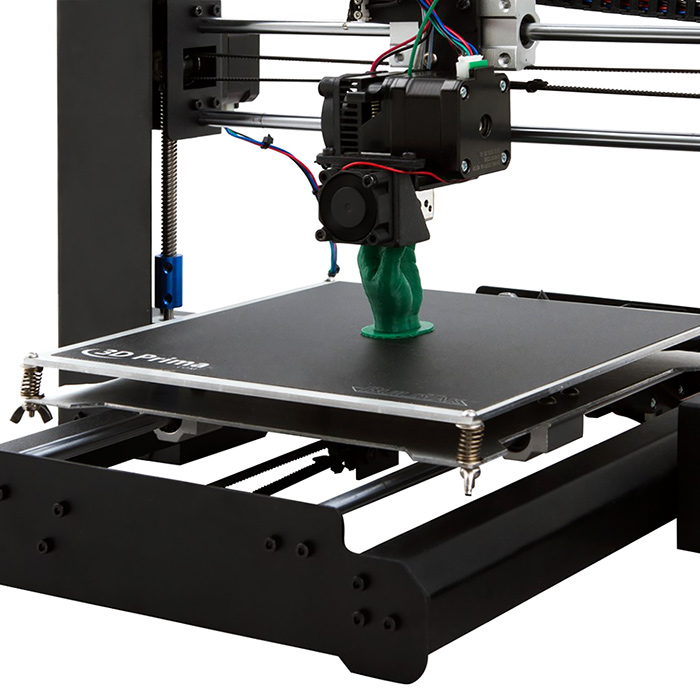
That all sounds great. So, what’s the catch?
Price, mostly. As a premium 3D printer, EDGE does have a high price tag. But with Fusion3 EDGE, you get what you pay for.
- Fast printing
- Reliable part quality
- Quiet and filtered enclosure
- Automatic maintenance reminders
- Pricey
Check Latest Price
4. Ultimaker S5 (Easy to Use)3D Printer Type: FDM | Materials: Tough PLA, TPU 95A, ABS, Nylon, TPU | Build Volume: 330 x 240 x 300 mm
Time is money, and time wasted on tweaking finicky printers is money lost.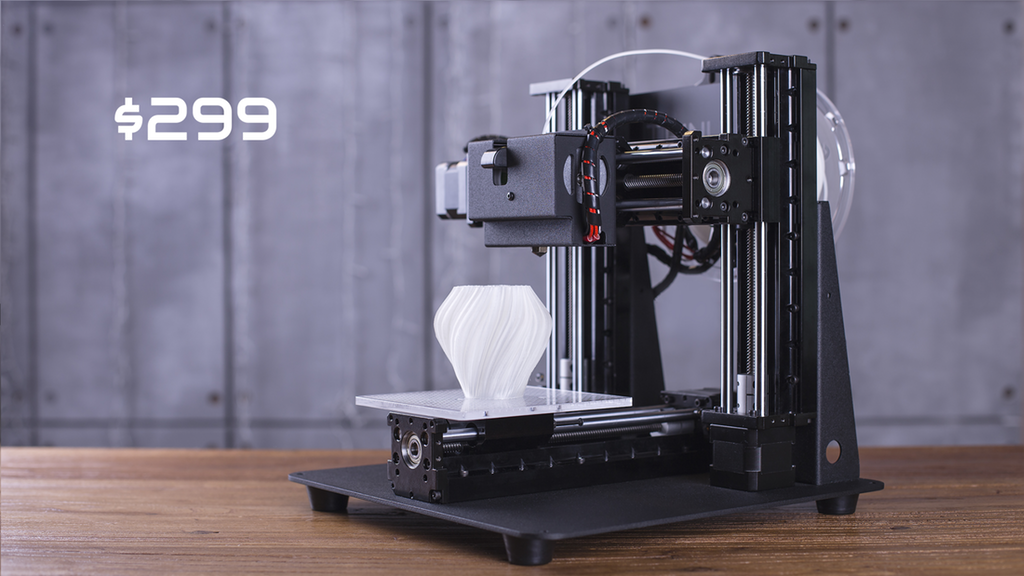 Ultimaker S5’s simple usability saves you both time and money.
Ultimaker S5’s simple usability saves you both time and money.
The S5 integrates seamlessly with Ultimaker’s own Cura software. Together with the clear touchscreen, the printer’s advanced automated features are straightforward to operate. Just a few clicks and the S5 starts printing.
The easy usability translates directly to high productivity. It’s no wonder Volkswagen, Siemens, and others like this printer.
The S5 also offers good printing quality. It has dual extruders for multi-material printing and a heated print bed for reliable part quality.
Another nice feature is the S5’s modularity. It has swappable print cores that enable you to print with more than 200 materials — and even metal filaments.
The simple performance comes at a high price, though. The S5 is also quite slow, compared to the previously featured printers, and its heated print bed is notorious for cracking.
But if you’re looking for a printer that keeps going with little intervention, Ultimaker S5 is your choice.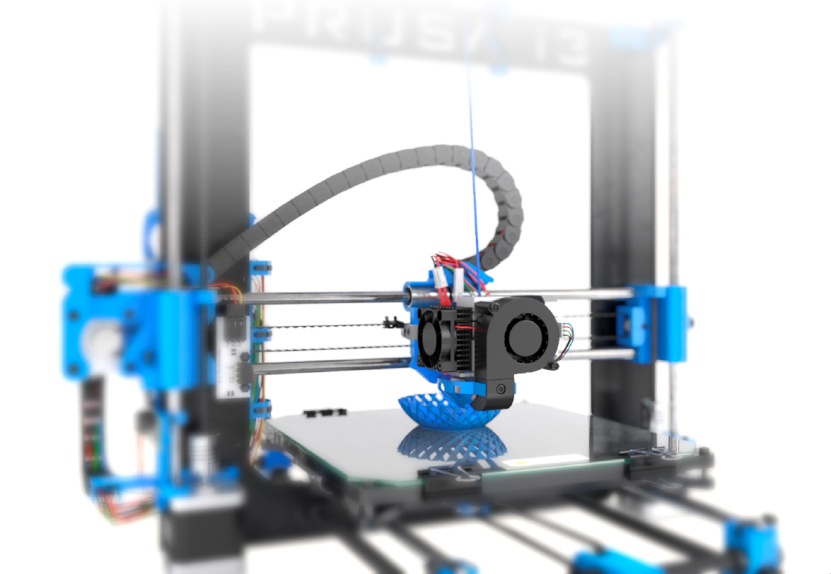
- Simple setup and operation
- Good print quality
- Plenty of material options
- Modular print cores
- Expensive
- Slow printing
- Fragile print bed
Check Latest Price
5. Prusa i3 MK3S+ (Best for High-Quality Prints)3D Printer Type: FDM | Materials: PLA, PETG, ASA, ABS, PC, HIPS, Flex, Nylon, Carbon filled & Woodfill | Build Volume: 250 x 210 x 210 mm
Don’t judge a book by its cover or a 3D printer by its price. At only $1,000, Prusa i3 MK3S+ punches way above its weight. It produces high-quality prints you wouldn’t expect from such an affordable machine.
At only $1,000, Prusa i3 MK3S+ punches way above its weight. It produces high-quality prints you wouldn’t expect from such an affordable machine.
Sure, the minimum layer thickness isn’t as impressive as with Raise3D Pro2 Plus or Fusion3 EDGE. But layer resolution isn’t the end-all-be-all of part quality.
The i3 MK3S+ features predefined printing profiles for Prusa filaments. Just pick the right profile — you’ll get reliably successful prints with almost zero effort. You can quickly alter the default profiles to match third-party filaments as well.
And you can print with almost any filament you want.
The i3 MK3S+ has a high-quality extruder that can reach 300°C. Carbon fiber, nylon or other engineering filaments are within your reach. And they print as effortlessly as anything.
You’ll want to get an enclosure to prevent warping with advanced filaments, though. The Prusa also can’t make huge parts, but what it does make is of consistently high quality.
- Reliably great part quality
- Affordable
- Big, helpful online community
- Simple to use
- No enclosure
- Small print volume
- Laggy software
Check For Official Website
Check Latest Price
Check For Kit Price
6. Dremel DigiLab 3D45-EDU (Best for School Use)
Dremel DigiLab 3D45-EDU (Best for School Use) 3D Printer Type: FDM | Materials: PLA, ECO ABS, PETG & Nylon | Build Volume: 254 x 152 x 170 mm
To get good at something, you should start young. Dremel DigiLab 3D45-EDU is a perfect 3D printer for teaching future additive manufacturing experts. Just look at the awards it’s received.
But what makes it so great for schools?
DigiLab 3D45 has a perfect balance of affordability, performance, and ease of use. You can set up and calibrate the printer in 15 minutes. Then you’re ready to start showing students how 3D printing works.
While the Dremel isn’t the most accurate machine, it’s still a professional 3D printer. It produces detailed prints of good quality.
As the students learn, the 3D45 lets them adjust the settings more accurately. The 3D45-EDU package even comes with 30 lesson plans from the 3rd to 12th grades.
The build chamber isn’t huge, but it’s more than enough for school use.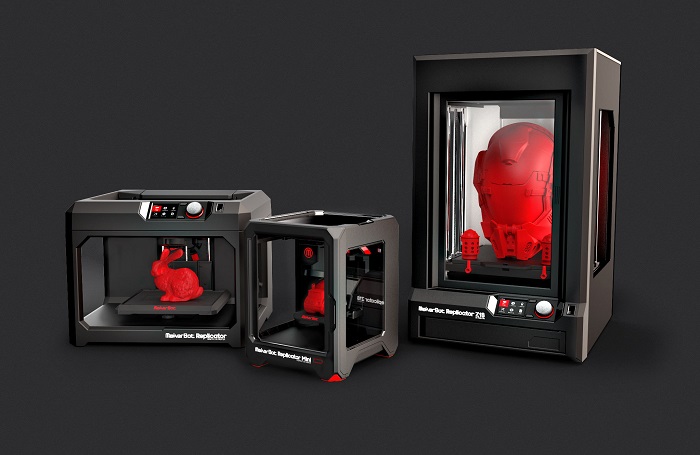 Also, Dremel claims 3D45 can handle nylon, but the 280°C extruder temperature seems a bit low for that.
Also, Dremel claims 3D45 can handle nylon, but the 280°C extruder temperature seems a bit low for that.
Nonetheless, Dremel DigiLab 3D45-EDU is a great package for getting students excited about 3D printing.
Learn more in our guide of the best 3D printers for schools.
(NOTE: Dremel no longer manufactures 3D printers and has licensed its brand to 3PI. The machines are the same, but it’s good to know who to talk to if you need technical support.)
- Included lesson plans
- Easy setup and operation
- Good part quality
- Small print volume
- Slow speed
- Limited materials
Check Latest Price
7. Zortrax M300 Dual (Best for Detailed Prints)
Zortrax M300 Dual (Best for Detailed Prints) 3D Printer Type: LPD Plus | Materials: Most Z-Materials, PLA, Tough PLA, ABS, ASA, PETG, CPE, Nylon, TPU, TPE & PVA | Build Volume: 265 x 265 x 300 mm
Zortrax M300 Dual will surprise you. It creates highly detailed prints — despite the on-paper rough and inaccurate 150-micron layer height.
How on earth does this 3D printer do it?
The M300 Dual’s secret lies in the Layer Plastic Deposition (LDP) technology. It’s essentially Zortrax’s own spin of fused filament fabrication (FFF/FDM). Tailor-made for this system, LDP makes use of M300’s accurate leveling and calibration sensors to deliver very high-quality prints.
Another part of the puzzle is Zortrax’s proprietary filaments. The 3D printer has a complete Zortrax ecosystem, so it knows precisely how to handle the materials to deliver fine details beyond its specs.
The dual extruder also prints with two nozzles, one distributing Zortrax’s water-soluble support material. This is a really handy invention since you can just wash the supports away after printing.
This is a really handy invention since you can just wash the supports away after printing.
Of course, that means you need to buy Zortrax’s filaments. You can use third-party materials, but you may not get as fine detail.
Zortrax M300 Dual will bring more detail than you’d expect to all small businesses.
- Excellent detail and part quality
- Water-soluble supports
- Practically locked to Zortrax filaments
- Mediocre volume
Check Latest Price
8. BCN3D Epsilon W50 (Best for Beginners)3D Printer Type: FFF | Materials: PLA, PVA, PETG, TPU, ABS, PP & PA | Build Volume: 420 x 300 x 400 mm
An entry-level 3D printer often sacrifices production power for simple usability. It’s a good thing, then, that BCN3D Epsilon W50 isn’t an entry-level 3D printer. It’s a professional machine that’s easy enough for beginners to use.
It’s a good thing, then, that BCN3D Epsilon W50 isn’t an entry-level 3D printer. It’s a professional machine that’s easy enough for beginners to use.
The printer’s quick to set up and calibrate. The most laborious part is print bed calibration — it’s not hard, just time-consuming. Even if it’s your first 3D printer, you’ll get Epsilon W50 ready to go in about 20 minutes.
And it still brings serious power to your workshop.
Epsilon W50 uses an independent dual extruder system. It can print two materials at once, print mirrored component halves, or two identical parts at once. Combined with the big print volume, you’ll enjoy industrial-level productivity.
One thing deterring beginners might be Epsilon W50’s admittedly high price point. But think of this high-end 3D printer like a good pair of boots — it costs more upfront but it will keep printing reliably for years.
In a nutshell, BCN3D Epsilon W50 is a beginner-friendly machine with veteran-level performance.
- Easy and reliable printing
- Independent dual extruder system
- Large print volume
- Expensive
- Default hot end doesn’t support reinforced filaments
- Long bed calibration process
Check Latest Price
9. MakerBot Method X (Best for Easy to Print)3D Printer Type: FDM | Materials: PLA, Tough PLA, PETG, PETG-ESD, Nylon, PC-ABS, ABS, ASA & PVA | Build Volume: 190 x 190 x 196 mm
It just keeps going and going and going… And that’s good.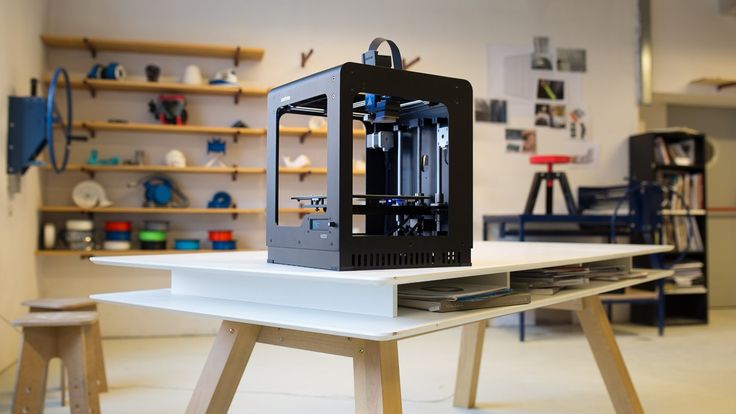 MakerBot Method X is the commercial 3D printer you need for effortless, reliable production.
MakerBot Method X is the commercial 3D printer you need for effortless, reliable production.
Method X has been designed from the beginning to make printing as easy as possible. It has plenty of features, like thermal regulation and a temperature control filament drawer, that contribute to consistent and predictable part quality.
But MakerBot recently pulled another ace from its sleeve.
The company recently released a new water-dissolvable support material. It rinses pretty cleanly off even under tap water, removing the need for extensive post-processing.
Imagine that — no cutting off supports with FDM.
That said, Method X isn’t a flashy printer. It has a small build chamber and you need to buy separate extruders to make full use of the admittedly wide material range.
But that’s Method X for you. It doesn’t boast, it doesn’t grumble — it just prints.
- Extremely reliable
- Simple to use
- Wide material range
- Needs add-ons for reinforced materials
- Default slicer could be better
Check Latest Price
10. Delta WASP 2040 Industrial X (Best for Fast Print)
Delta WASP 2040 Industrial X (Best for Fast Print) 3D Printer Type: FDM | Materials: PLA, ABS, PETG, TPU, TPE, Polypropylene, Polycarbonate, PC+ABS, PPS, PMMA, PVA & PA | Build Volume: Ø 200 x h 400 mm
Do you feel the need? The need for speed? Delta WASP 2040 Industrial X is the speed demon you’re looking for.
The WASP achieves lightning-fast printing thanks to three robotic arms that move its extruder around. Automatic calibration makes operating this futuristic solution simple.
But wait, there’s more than speed to the WASP!
Its dual gear filament driver pushes material through at a steady rate, resulting in good detail quality. The accuracy doesn’t beat printers like Raise3D Pro2 Plus, but the speed sure does.
You might expect constant maintenance at these speeds, but don’t worry. Delta’s Hot and Cold system controls the machine’s internal and external temperature. You won’t have to constantly blow money on spare parts.
As a cherry on top of it all, the WASP supports third-party materials. The material range isn’t as extensive as with some other printers, but it should keep you in business for a long time.
That’s a good description for Delta WASP 2040 Industrial X, actually. Printing with it is like watching Usain Bolt run a marathon.
- Lightning-fast printing
- Affordable
- Low maintenance
- Mediocre detail
- Bulky machine
Check Latest Price
Industrial Quality at Small Business Budgets
Source: Youtube Marvin Medina (3D Printed Cellphone Case)Commercial 3D printers are great equalizers. They’re quickly changing the SME landscape by narrowing the gap between small and large businesses.
They’re quickly changing the SME landscape by narrowing the gap between small and large businesses.
The best professional 3D printers make printing plastics easy, fast, and affordable. You can produce components with detail quality comparable to injection molding and strength that can surpass metal.
But not just every 3D printer deserves the title of a “commercial 3D printer.” What is it that makes a 3D printer professional?
What Is a Commercial 3D Printer?
Source: Youtube Tech HD (3D Printed VW Bus Toy)Commercial 3D printers — also called prosumer or professional 3D printers — sit in the space between consumer 3D printers and full-blown industrial 3D printing behemoths.
In general, a commercial 3D printer costs less than $10,000. They have features that only the most advanced hobbyists might need but which are valuable for professional applications.
At the same time, they’re not meant for large-scale mass production like industrial printers. In short, they’re a low-cost method for SMEs to make use of industrial-grade materials.
In short, they’re a low-cost method for SMEs to make use of industrial-grade materials.
What to Look for in a Commercial 3D Printer
Source: Youtube Tech HD (Car Parts)Are you about to buy the first printer for your business? You might feel a bit lost among all the options for professional 3D printers — and we sympathize.
When browsing through our list of machines, keep an eye on these details to find the right machine for you.
3D Printing Technology
Different types of 3D printers excel at different tasks. If you need strong parts that don’t necessarily look amazing, FDM technology can create components tougher than metal. But if intricate detail is your key to success, SLA resin printers will blow you away with their detail quality.
Printing Performance
Pay attention to the maximum nozzle temperature (with FDM printers) and print speed. The higher the maximum temperature, the more materials you can print with. And, of course, the faster you can print, the higher your productivity.
Material Range
Good professional 3D printers will support a wide variety of materials, from flexible ones to reinforced engineering plastics. But wider material compatibility can add to the price. If you know you only need one or two materials, don’t sink money into a machine that can do it all
Build Volume
Commercial applications often require you to create large prints. Make sure your printer can build big enough parts — otherwise, it’s just a waste of money.
Printer Features
High-end 3D printers often come with advanced features, like a heated print bed and chamber, a built-in camera, and more. These aren’t just expensive toys. You want them to ensure consistently high part quality.
Uses of Commercial 3D Printers
Source: Youtube 3d Printed ProfitsProfessional 3D printers are versatile machines that can benefit many different types of SMEs. If you create a product, you can probably reduce costs, shorten lead times, and streamline workflows with a 3D printer. Here are just some of their leading commercial uses.
Here are just some of their leading commercial uses.
Part Design & Prototyping
3D printing enables a higher degree of design freedom when compared to traditional manufacturing. Combined with materials that can create true-to-life surface textures and detail, you have a powerful prototyping technology in your hands.
The best professional 3D printers produce accurate prototypes in a matter of hours — featuring shapes that are impossible for conventional production methods. You can save time and money by creating your prototypes in-house.
Small-Scale Manufacturing
Commercial 3D printers support end-use ready materials, such as nylon or PEEK, and produce durable parts with smooth surfaces. You can print ready-to-sell components for cars, drones, or functional tools.
Alternatively, you can print spare parts for machinery you use for different jobs. Save money and keep your machines running, how about that?
Medical Applications
SLA resin printers — like Formlabs Form 3+ we listed — can create accurate medical appliances from durable, biocompatible materials. These printers are quickly becoming standard fixtures in every dentist’s office, for example. Read our review of the best dental 3D printers here.
These printers are quickly becoming standard fixtures in every dentist’s office, for example. Read our review of the best dental 3D printers here.
But even filament printers have their medical uses. They let doctors produce all kinds of useful tools, like hooks, trays, or medical models.
Architecture
Every major building began its life as a blueprint and a model. In the past decade or so, a professional 3D printer has become an architect’s best friend.
Building models by hand can take weeks and cost a fortune. Now, imagine designing a building in 3D modeling software and printing it overnight for a meeting in the morning.
Conclusion
Commercial 3D printers have done to SMEs what industrial printers did to large-scale businesses. They’ve made manufacturing faster, cheaper, and more accessible. A professional 3D printer will be a welcome addition to your business.
If you’re still wondering what the best commercial 3D printers for you are, here are our suggestions:
- For the highest detail quality, consider Formlabs Form 3+ or Zortrax M300 Dual.

- For durable end-use parts, go for Ultimaker S5 or Makerbot Method X.
- Dremel DigiLab 3D45-EDU introduces professional 3D printers to classrooms.
- Finally, the one printer to rule them all is Raise3D Pro2 Plus.
Best Affordable Commercial 3D Printer Fusion3
BEST AFFORDABLE COMMERCIAL 3D PRINTER
The Fusion3 EDGE commercial 3D printer delivers the complete commercial solution: speed, print quality, large build area and service & support that businesses require.
Perfect for prototyping, jigs & fixtures, and the production of end-use parts, the Fusion3 EDGE is the best commercial 3D printer for your business and commercial 3D printing needs.
Many industries are embracing 3D printing, but the most significant that we see here at Fusion3 come from the following: Automotive, Aerospace, Medical Manufacturing, Metalworking, and other related manufacturing fields.
Only $6,999 USD + Shipping World-Wide
REQUEST A PERSONALIZED QUOTE
Commercial Parts 3D Printed On the Fusion3 EDGE Commercial 3D Printer
VIEW MORE SAMPLE PRINTS
Affordable, at $6,999 plus shipping, the EDGE Commercial 3D Printer Delivers the Reliability and Performance You Need for the Following Commercial Applications:
With the EDGE commercial 3D printer at your premises, your engineers can now prototype and repeatedly test parts in much less time than using outside vendors.
Injection molding is capital intensive and expensive unless you have a large volume of parts to consume. With its fast speeds, large build area, and low material costs, EDGE provides a cost-effective tool to produce plastic parts inexpensively.
Fusion3’s EDGE commercial 3D printer enables manufacturing teams to create tools to quickly improve their performance on the manufacturing line. Companies with innovation programs find commercial 3D printers engage employees and drive rapid process improvements.
Best-In-Class Speed & Print Quality
The Fusion3 EDGE commercial-grade 3D printer features our patented F-Series motion-control system that enables the 3D printing of high-quality objects at layer heights as low as .02mm and speeds up to 250mm/sec.
Don’t waste time waiting for your parts to print. With EDGE you will spend more time designing and testing.
Durable & Reliable
Unlike consumer printers, EDGE is a workhorse using highest quality components and able to withstand use and abuse in commercial environments.
Fusion3 backs our 3D printers with the longest warranty in the industry so you never have to worry about expensive repairs or service contracts.
Enormous Print Volume
The Fusion3 EDGE has the build volume of a true professional 3D printer, with a large 1.64 cubic foot print volume (14.5″x14.5″x13.5″).
Our large printable area enables customers to print large objects in one piece or many smaller items in large batches. It’s important to consider scale for commercial uses of 3D printers, so make sure you have a 3D printer large enough to print what you need.
It’s important to consider scale for commercial uses of 3D printers, so make sure you have a 3D printer large enough to print what you need.
Affordable Commercial 3D Printing
With a price of only $6,999, the EDGE is your gateway to affordable, professional 3D printing.
Fusion3 offers competitive leasing options and volume discounts for orders of 4 or more. Never before has a commercial 3D printer been so affordable.
FREQUENTLY ASKED QUESTIONS:
COMMERCIAL 3D PRINTERS
What’s the difference between a consumer and a commercial 3D printer?
The difference between a consumer and a commercial 3D printer is in the printing capability, printing speed, and the application itself. Consumer printers are much smaller and slower than commercial-grade 3D printers. Additionally, consumer 3D printers are much more limited with the choice of filaments, while their commercial counterparts can print a wide variety of materials.
What are some of commercial applications of 3D printing?
The most common commercial applications of 3D printing are:
- Prototyping
- Low-Volume Manufacturing
- Supporting the Manufacturing Floor with Jigs & Assembly Fixtures
- Metal Fabrication, including the production of low-volume Press Brakes
- Maintaining production machinery by producing replacement parts
What is typically the price for a commercial 3D printer?
Commercial 3D printers can cost anywhere from $5,000 to $100,000. At $6,999, the USA-Made Fusion3 EDGE is an affordable commercial 3D printer with comparable or greater reliability, durability, and performance to other printers at similar or higher prices.
At $6,999, the USA-Made Fusion3 EDGE is an affordable commercial 3D printer with comparable or greater reliability, durability, and performance to other printers at similar or higher prices.
Is the Fusion3 EDGE a good 3D printer for prototyping?
Yes, the Fusion3 EDGE is a great 3D printer for prototyping. With the Fusion3 EDGE commercial 3D printer, your engineers can prototype and repeatedly test parts in much less time than using outside vendors, at great print quality, tight tolerances and high strength.
What should you look for in a commercial 3d printer?
Look for a commercial 3D printer that offers the following features:
- Cost efficient – not only a reasonable initial capital outlay but inexpensive to operate (cost of filament & consumables) and maintain (parts & service).
- Supports a variety of filaments – some 3D printers can only print one or two materials, limiting their utility. Look for a 3D printer that can print a wide variety of different 3D materials.
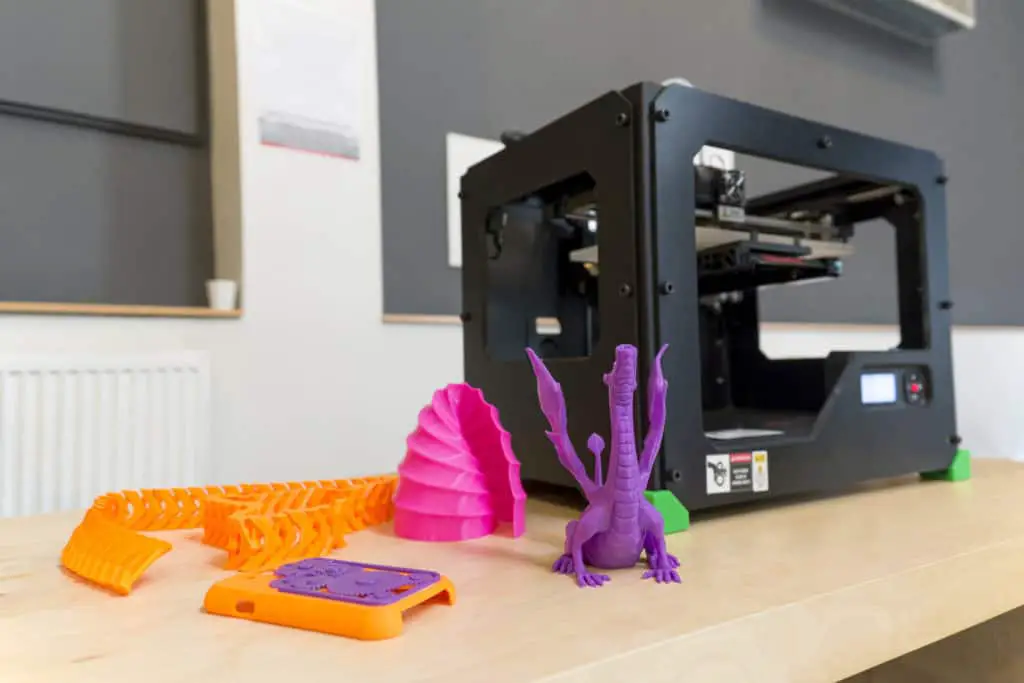
- A large printing area – a small print area will limit the types or number of items you can print. A larger print surface not only allows for printing of larger objects but allows for large and larger print runs of one part or a set of parts, increasing the 3D printer’s utility.
- Reliable support and extensive warranty – 3D printing is a great technology, but it is closer to a machine tool than a push button appliance. You will need great support to get the most out of a commercial 3D printer.
Click Here
Need a 3D printer? Here are the best options for use at home and at work・Cults
Whether you're a 3D artist looking to present your work in the best possible way, or a business owner looking for a 3D printer ideal for creating promotional materials, 3D printing is becoming more and more popular. popular in 2020. From robotic wasps to chic brochures, 3D printing is a vital tool for many people and organizations. It's very cool, really.
3D printing is another technological innovation that is taking over the modern world despite strong competition, be it in the world of gambling where one of the UK's new casino sites has proved popular in the mobile gaming world, along with other products such as Fitbits and smart glasses. Technology is booming and the world's 3D printers are certainly reaping the benefits. One of the most exciting areas of the technology industry at present, 3D printing will also develop day by day. nine0003
Technology is booming and the world's 3D printers are certainly reaping the benefits. One of the most exciting areas of the technology industry at present, 3D printing will also develop day by day. nine0003
If you are looking to purchase a 3D printer for yourself or your business, the choices can be quite extensive and often confusing. To help you with your search, here is an overview of some of the best 3D printers currently available, with some machines ideal for the home and others ideal for businesses.
In terms of commercial printing, the CEL-UK RoboxPro is easily one of the best printers in the world. As a leader in the world of 3D printing, CEL-UK's latest creation comes with a host of worthwhile features including auto filament loading, auto bed leveling, Wi-Fi, network printing and interchangeable heads. However, the main draw of this printer is its reliability and print quality, making it ideal for any tight deadline or creative assignment. CEL-UK RoboxPro is a fantastic choice for commercial and educational use. nine0003
nine0003
The Ultimaker S3 is especially popular in education, is preferred by schools and colleges, is expensive, but you get what you pay for. The 3D printer is fast, the print quality is high, and it is very reliable. Aimed also at commercial markets, the Ultimaker S3 has a variety of accessories and materials that are perfect for any design need and perfect for people who want to learn about 3D printing and its benefits. The printer also comes with Cura slicer software, replaceable hotends cartridges and a flawless touch screen user interface. nine0003
When it comes to SLA printing, the FormLabs Form 3 is especially popular in 2020, especially as a home printer, although it is aimed at those who know this particular style of printing. Far surpassing FDM printers, the print quality of this machine is at the highest level thanks to the high-precision laser, which is ideal for casting and production, high quality prototypes and jewelry.
Raise3D E2 is suitable for printing at home, in schools or in large enterprises, it is difficult to miss because of its huge size and weight, but this should not put you off, as it works excellently. Considered by many to be the best workhorse among 3D printers, it features easy business and network integration, a simple and intuitive interface, and impeccable reliability. nine0003
Another device that guarantees high print quality, the Original PRUSA SL1 uses MSLA technology, which is a variant of the popular stereolithography technology, but the difference is clear due to the extremely high print quality. Simply put, this machine is expected to be a game-changer in the SLA market, especially with the PrusaSlicer software.
This page has been translated using machine translation. Suggest the best translation nine0003
Top 10 3D printers available for purchase in 2020
3D printing is relatively new. Therefore, special attention is riveted to it, both experienced and novice users of office equipment. In this article, we will present a list of the top ten 3D printers available for purchase in 2020. Here you will find devices that meet high quality standards, are simple and easy to use, and are also capable of producing large volumes of products. After reviewing the information provided, you can easily choose a 3D printer that suits your requirements. nine0003
In this article, we will present a list of the top ten 3D printers available for purchase in 2020. Here you will find devices that meet high quality standards, are simple and easy to use, and are also capable of producing large volumes of products. After reviewing the information provided, you can easily choose a 3D printer that suits your requirements. nine0003
In the list you will find the following 3D printer models:
- Original PRUSA i3 MK3s
- CEL-UK RoboxPro
- Ultimaker S3
- FormLabs Form 3
- Original PRUSA SL1
- TRILAB DeltiQ 2
- Raise3D E2
- CEL-UK RoboxDual
- LulzBot Mini 2
- Snapmaker 2.0 A350
Immediately, we note that all printers are diverse and suitable for use in various fields of activity. Therefore, we did not list them in any particular order. Purchasing any printer from the list is a smart financial investment. nine0003
3D printer for universal use
Model:
Original Prusa I3 MK3S
9,0002 Material: thread 1.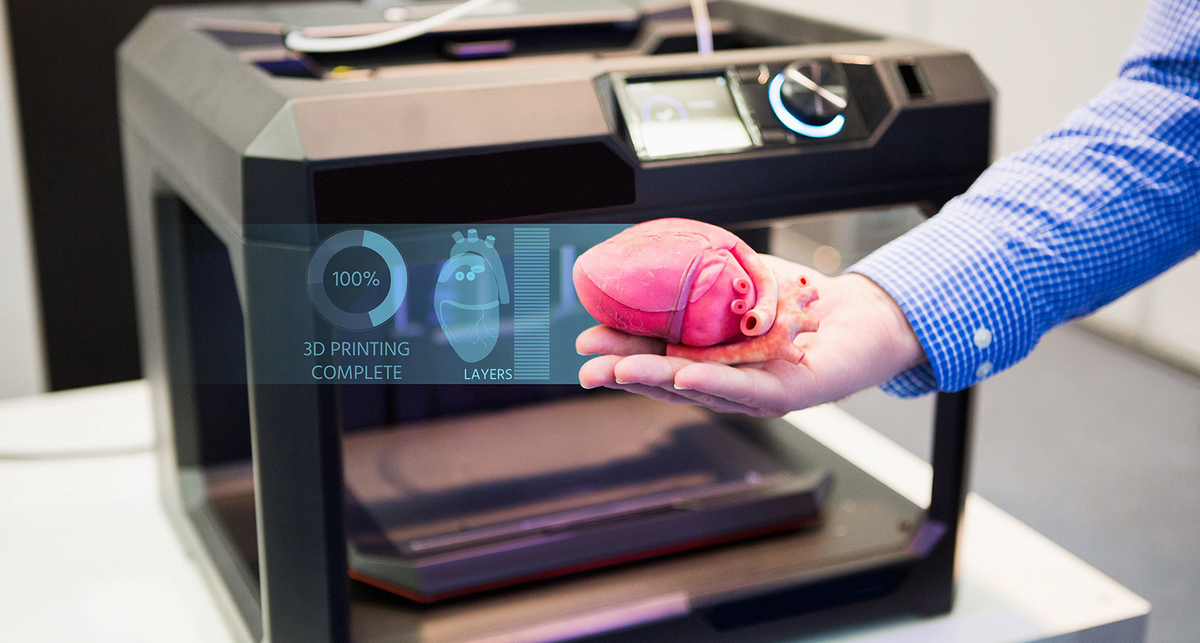 75 mm | Working area: 250x210x210 mm | Layer thickness: 50-350 µm | Size: 550x400x500 mm | Weight: 7 kg
75 mm | Working area: 250x210x210 mm | Layer thickness: 50-350 µm | Size: 550x400x500 mm | Weight: 7 kg
Advantages:
- excellent working speed;
- high quality printing.
Disadvantages:
- lack of protective walls.
Description: Josef Pruscha is a leader in 3D printing. Their products are famous for their high reliability and long service life. The flagship model is the Original PRUSA i3 MK3s. It is characterized by high speed, low noise and excellent print quality. The most innovative developments are used in the production of the device: Bondtech extruder, P.I.N.D.A. 2, E3D V6 nozzle and thread sensor. The main feature of the printer is that it can be used for a variety of purposes. It is worth noting that the device is supplied both assembled and as a kit for assembly. nine0003
nine0003
3D printer for business
Model:
Cel-Uk RoboxPro
Characteristics: Models Models Models Models of the Nap Material: thread 1.75 mm | Working area: 210x300x400 mm | Layer thickness: 50-500 µm | Size: 513x508x605 mm | Weight: 26 kg
Features:
- interchangeable print heads;
- network connection option.
Disadvantages:
- oversized.
Description: CEL-UK is a leader in 3D printing innovation. Their Robox series printers are the most functional in the FDM class. The flagship model CEL-UK RoboxPro is a direct proof of the above words. The device has a huge set of functions, including: auto-filament, automatic layer alignment, Wi-Fi and the ability to print over a network. In addition, the closed design and interchangeable print heads make it the best choice for businesses. nine0003
The device has a huge set of functions, including: auto-filament, automatic layer alignment, Wi-Fi and the ability to print over a network. In addition, the closed design and interchangeable print heads make it the best choice for businesses. nine0003
3D printer for educational institutions
Model:
ULTIMAKER S3
Characteristics: Modeling Models Models of the Nap Material: thread 2.85 mm | Working area: 230x190x200 mm | Layer thickness: 20-600 µm | Size: 394x489x637 mm | Weight: 14.4 kg
Advantages:
- easy to connect to the network;
- high quality printing.
Disadvantages:
- high price.

Description: Ultimaker has been attracting attention ever since 3D printing began to take off. Although representatives of the company have only recently begun to use modern open source software. The new Ultimaker S3 is valued for its fast speed, robust design and excellent print quality. The main features include replaceable cartridges, a touch-screen display and a Cura-branded slicer. Ease of use makes the device indispensable for educational institutions. nine0003
3D printer SLA
Model :
Formlabs Form 3
9,0002 Material: resin Multiple | Working area: 145x145x185 mm | Layer thickness: 25-300 µm | Size: 405x375x530 mm | Weight: 17. 5 kg
5 kg
Pros:
- high print quality;
- large selection of materials.
Flaws:
- prints need to be reworked (cleaning and trimming).
Description: FormLabs manufacture SLA 3D printers. These devices use a special liquid resin as the main material for printing. Form 3 is the most compact device in the series. But because of the precise laser that guarantees the highest quality prints, this printer is most suitable for the production of product prototypes, jewelry and various castings. The device is considered the most original 3D printer available on the market. nine0003
3D printer MSLA
Model:
Original PRISA SL1
Characteristics: 9 Technologies: STERILOGRASIS: Technology: Material: resin 405 nm | Working area: 120x68x150 mm | Layer thickness: 25-100 µm | Size: 400x237x225 mm | Weight: 10. Pros: Flaws: Description: With the Original PRUSA SL1, Josef Prusha's company was able to conquer the market of SLA 3D printers (previously they worked only in the field of FDM technologies). True, the device was classified under the MSLA subcategory, due to the fact that it uses an LCD matrix and an ultraviolet LED backlight for resin processing, instead of standard high-precision lasers. Despite the fact that the printer consists of cheap components, the print quality meets the highest standards. nine0003 Model : Characteristics: Advantages: Disadvantages: Description: This 3D printer uses 3 articulated print heads. This is what distinguishes it from conventional 3D printers. This approach allows you to reduce the space occupied by the device, as well as the amount of additional equipment used. At the same time, TRILAB DeltiQ 2 is characterized by a large working area and a wide range of features. The device has an E3D hotend extruder and a Wi-Fi Duet 2 panel. In addition, the printer can be connected and controlled from a smartphone. Model: Characteristics: Modeling Models | Material: thread 1.75 mm | Working area: 330x240x240 mm | Layer thickness: 20-250 µm | Size: 607x596x465 mm | Weight: 40 kg Features: Disadvantages: Description: Raise3D E2 is a printer capable of producing high quality FFF prints. Great for home, education, medical and business. The printer is equipped with two independent extruders. Has a strong and reliable design. Model: Characteristics: 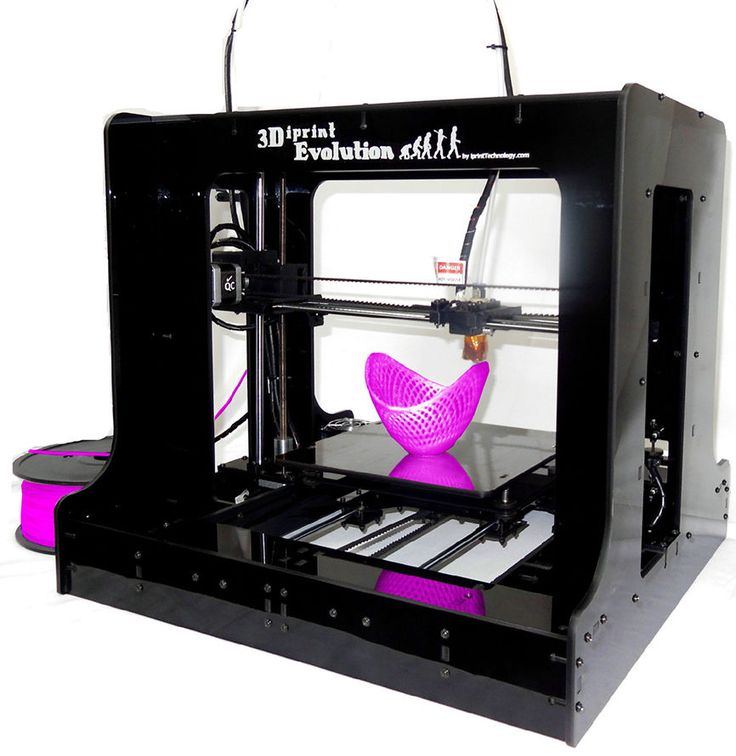 6 kg
6 kg
3D printer DELTA
Trilab Deltiq 2
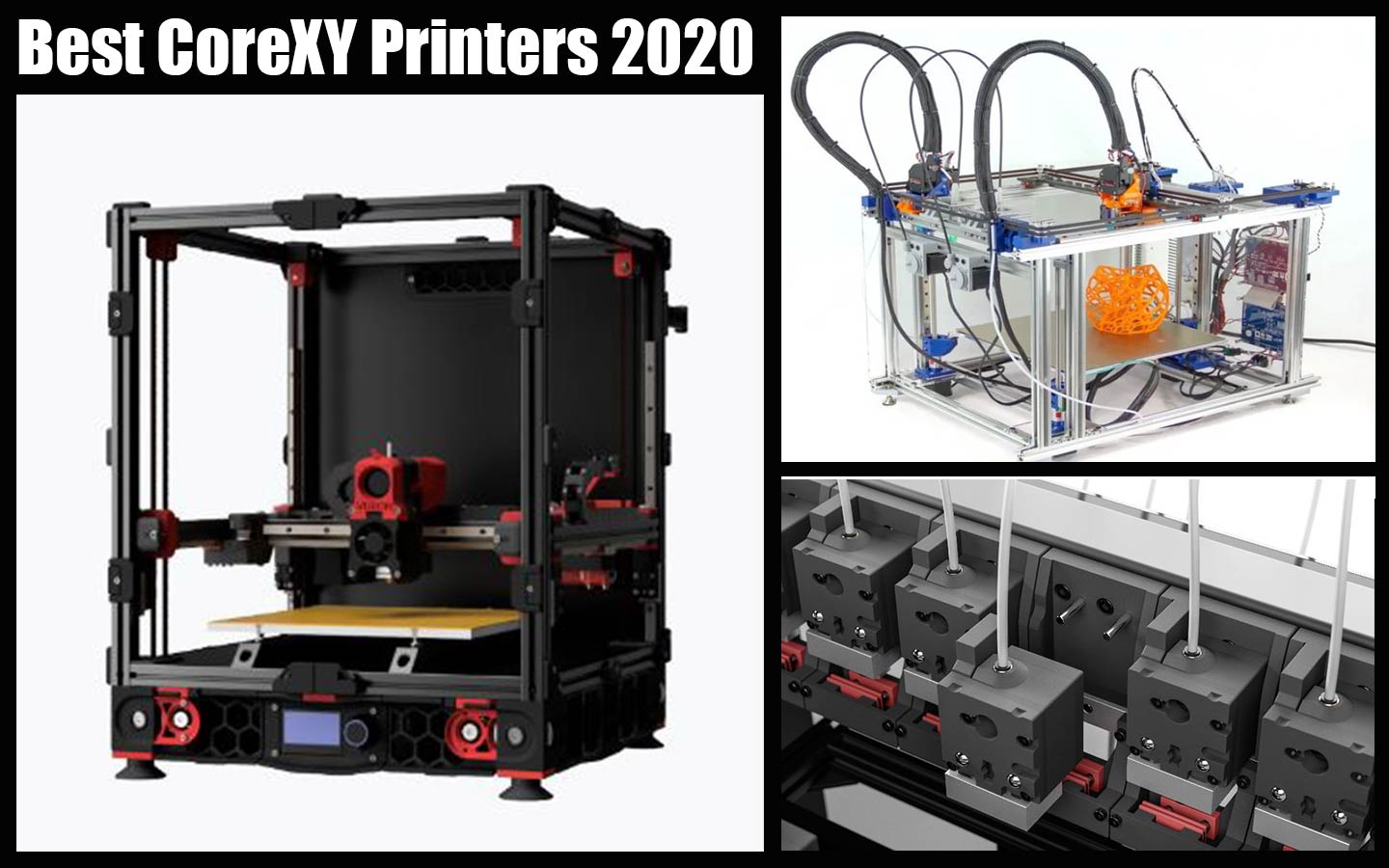 75 mm | Working area: 250x250x300 mm | Layer thickness: from 50 µm (nozzle dependent) | Size: 410x500x810 mm | Weight: 10 kg
75 mm | Working area: 250x250x300 mm | Layer thickness: from 50 µm (nozzle dependent) | Size: 410x500x810 mm | Weight: 10 kg
 nine0003
nine0003 3D printer for work
RAise3D E2
 In addition, the 3D printer is easy to operate and maintain. Such an apparatus will be able to meet the needs of any consumer involved in modeling, design or design. High quality of the press is provided with automatic calibration of a platform. nine0003
In addition, the 3D printer is easy to operate and maintain. Such an apparatus will be able to meet the needs of any consumer involved in modeling, design or design. High quality of the press is provided with automatic calibration of a platform. nine0003 3D printer for home and office
CEL-UK Roboxdal
Advantages:
- robust construction;
- easy operation.
Disadvantages:
- use only branded consumables.
Description: The printer went on sale in 2016, but still remains the best in its segment. Equipped with a dual extruder, smart spools, autoloader, self-levelling and flexible platform, the CEL-UK RoboxDual allows you to quickly prepare the material, as well as fully control the printing process. The device is adapted to work in any conditions. Therefore, it is great for both home and industrial use. nine0003
Equipped with a dual extruder, smart spools, autoloader, self-levelling and flexible platform, the CEL-UK RoboxDual allows you to quickly prepare the material, as well as fully control the printing process. The device is adapted to work in any conditions. Therefore, it is great for both home and industrial use. nine0003
3D printer for newcomers
Model :
Lulzbot Mini 2
Characteristics:
9000 Modeling Models Material: thread 2.85 mm | Working area: 160x160x180 mm | Layer thickness: 50-400 µm | Size: 457x339x607 mm | Weight: 9 kg
Advantages:
- Open source software;
- ease of operation.
Disadvantages:
- lack of protective walls.

Description: If you are just learning the basics of 3D printing, then start with the LulzBot Mini 2 printer. Another important advantage of the device is its moderate overall dimensions. The compact design and light weight allow this printer to be placed on a typical desktop. nine0003
Multifunctional 3D printer
Model :
Snapmaker 2.0 A350
REAPERS: 9000
-SPROLOGY CNC Router | Laser power: 1.6 Watt | Working area: 350x350x350 mm | Layer thickness: 50-300 µm | Size: 645x480x580 mm | Weight: 9.8 kg
Advantages:
- multifunctional;
- structural strength.
Disadvantages:



